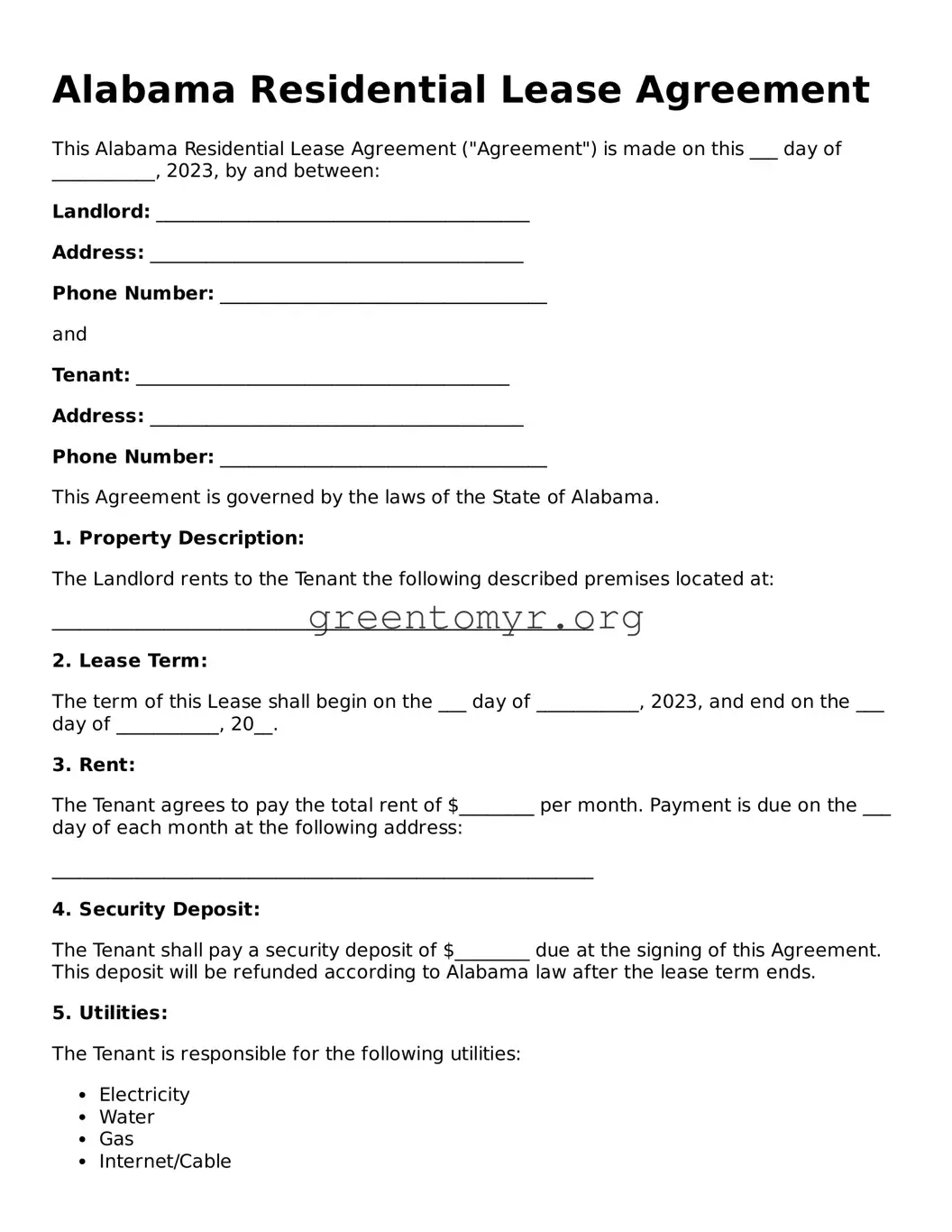Alabama Residential Lease Agreement
This Alabama Residential Lease Agreement ("Agreement") is made on this ___ day of ___________, 2023, by and between:
Landlord: ________________________________________
Address: ________________________________________
Phone Number: ___________________________________
and
Tenant: ________________________________________
Address: ________________________________________
Phone Number: ___________________________________
This Agreement is governed by the laws of the State of Alabama.
1. Property Description:
The Landlord rents to the Tenant the following described premises located at:
__________________________________________________________
2. Lease Term:
The term of this Lease shall begin on the ___ day of ___________, 2023, and end on the ___ day of ___________, 20__.
3. Rent:
The Tenant agrees to pay the total rent of $________ per month. Payment is due on the ___ day of each month at the following address:
__________________________________________________________
4. Security Deposit:
The Tenant shall pay a security deposit of $________ due at the signing of this Agreement. This deposit will be refunded according to Alabama law after the lease term ends.
5. Utilities:
The Tenant is responsible for the following utilities:
- Electricity
- Water
- Gas
- Internet/Cable
6. Maintenance and Repairs:
The Tenant agrees to keep the Property in a good condition and notify the Landlord of any necessary repairs promptly.
7. Termination:
Either party may terminate this Agreement under the following conditions:
- Notice given 30 days in advance
- Non-payment of rent
- Violation of lease terms
8. Governing Law:
This Lease shall be governed by the laws of the State of Alabama.
IN WITNESS WHEREOF, the parties have executed this Agreement as of the date first above written.
Landlord Signature: _______________________________
Date: __________
Tenant Signature: _______________________________
Date: __________
